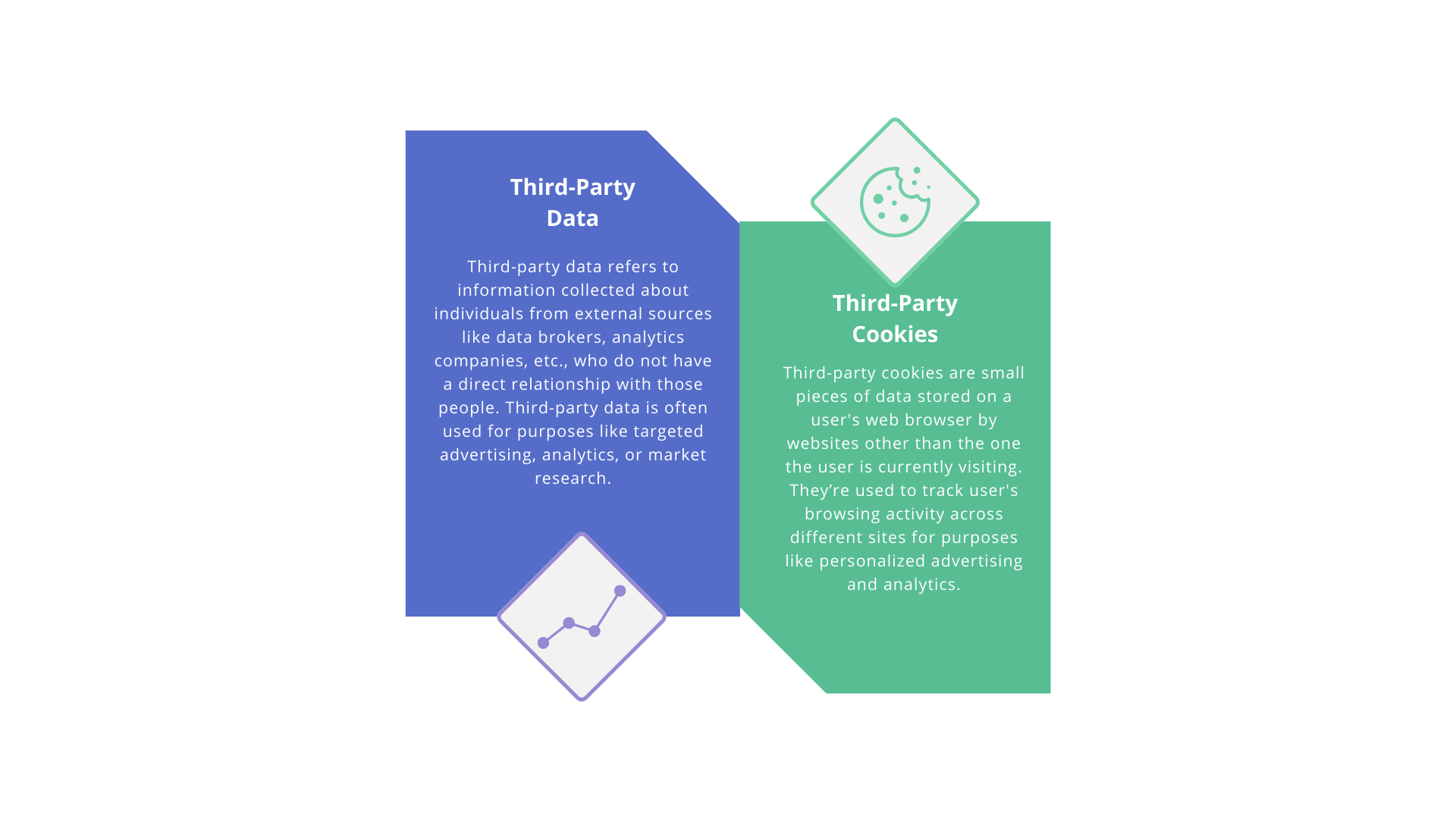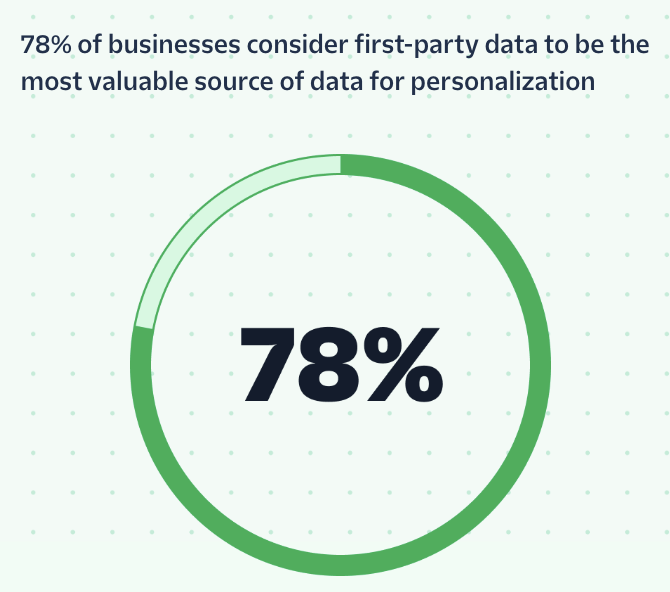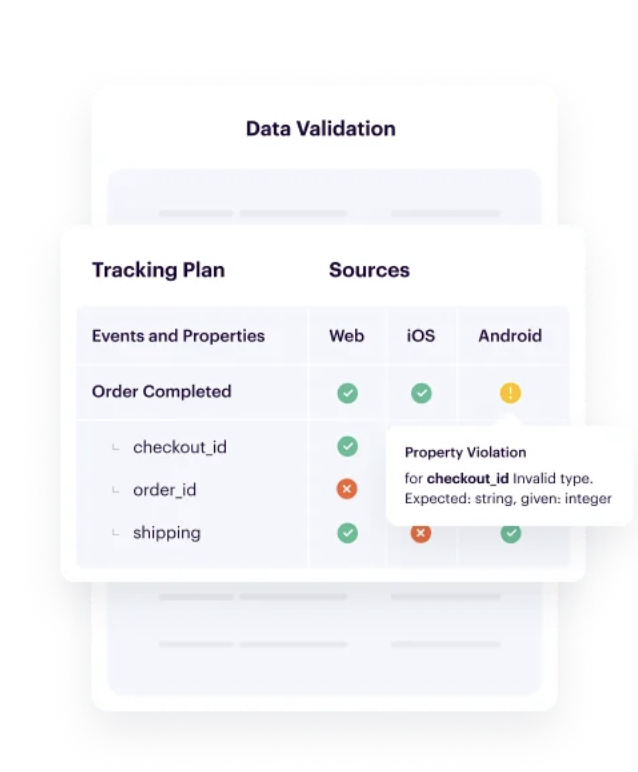Historically, third-party data has been a billion dollar industry. But as privacy regulations continue to evolve, consumers are voicing their distrust over the buying and selling of their information without their knowledge or consent.
At Segment, we’ve long pointed to first- and zero-party data as the best way to drive business insights, create better marketing campaigns, and build customer trust. Below, we explore key differences between third- and first-party data as a quick refresher.
What is third-party data?
Third-party data refers to data that’s collected about a customer by someone other than the company that will use it. Third-party data can range from demographic to information on people’s online behavior. And while it can offer quick insights, third-party data comes with disadvantages.
Since this data is obtained from an outside source (i.e., a third party), there are no guarantees that it was collected in a way that’s compliant with relevant privacy laws and regulations, or that the data is up-to-date and accurate.
On top of that, third-party data can create a rift between a business and the customer. When someone starts receiving personalized ads from a business they’ve never interacted with– but who has insight into their behavior– it can come across as off putting or even creepy.
The difference between third-party data and third-party cookies
Issues of privacy, compliance, and personalization are all interconnected when talking about customer data (especially for marketing and advertising purposes). However, it’s important to note a key distinction between third-party data and third-party cookies.
As we know, third-party data refers to data that’s collected and aggregated by a company or entity that doesn’t have a direct relationship with the users (that the data is about).
A third-party cookie is a small piece of data that’s stored on a user’s browser by a different website than the one they’re currently on. Third-party cookies had been a staple of retargeting and digital advertising for years, but are now being phased out by browsers like Safari, Google, and Firefox due to growing privacy concerns.

You can learn more about the phaseout of third-party cookies here.
First-party data vs. third-party data
On the other end of the spectrum from third-party data is first-party data – or data that a company collects from direct customer interactions (e.g., products viewed, in-app behavior, transaction history, etc.).
Some of the biggest differences between first- and third-party data boil down to data privacy and personalization – here’s why.
Data privacy considerations
With a first-party approach, data is collected, stored, and protected by the business using it. It always remains in your control and can be updated as needed to maintain and uphold the wishes of the customer (e.g., handling user suppression or deletion requests).
Third-party data may be obtained in any number of ways; only the entity that initially collected it knows exactly how. It's possible to check on data collection methods by reading the terms and conditions of major data companies. However, once data gets sold and resold, it could be altered.
Better personalization
First-party data is more effective at personalization than third-party data, as it provides specific insight into the relationship customers have with your brand. Questions such as “What features do my customers use most?” or “How many searches do they perform?” are answered by the unique data you collect via a customer’s interaction, not as part of a dataset for activity across the entire internet.
In fact, many consumers prefer a personalized experience based on the first-party data.

How Segment helps prioritize first-party data
Segment helps businesses collect, clean, and consolidate first-party data, and then activate that data in any downstream destination.
Break down data silos with Connections
Data silos can be incredibly difficult to break down, and wreak havoc on businesses’ ability to leverage insights. With Segment Connections, organizations can integrate the different tools and platforms they use in a matter of minutes (with over 450 pre-built integrations to choose from, along with the ability to create custom data Sources and Destinations).
Businesses can then integrate data from every touchpoint, including sales apps, payment processing systems, customer support tools, and more.
Take control of your data quality with Protocols
Segment’s Protocols helps you manage first-party data to ensure accuracy and integrity. With automated data validation, you can block or fix data that doesn’t match a predefined naming convention before it reaches downstream tools.

Scale personalized experiences with Unify
Segment Unify empowers businesses with complete customer profiles that are updated in real time. With Unify, you can stitch together anonymous user behavior with a known profile once that user becomes a part of your database, and leverage this data for highly personalized experiences.


The State of Personalization 2023
Our annual look at how attitudes, preferences, and experiences with personalization have evolved over the past year.
Frequently asked questions
An organization collects first-party data by getting it directly from the consumer in the course of a business engagement. Past purchase history, most-visited pages, or clicks on filters when narrowing down product selection are all examples of first-party data.
Businesses that use first-party data have more assurance that the information on each customer is relevant to their company since it was collected directly during an interaction with the customer. Third-party data, on the other hand, is collected from consumers who may have never even heard of your brand, which can lead to mistrust and inaccuracy.
Zero and first-party data can and should be used together to create a complete picture of a customer and build a marketing campaign that’s relevant to their current needs. Customer data platforms (CDPs) like those offered by Segment use data integration for the most holistic and updated version of each customer profile.
First-party data is more accurate, timely, and likely to follow privacy guidelines than data purchased through a third-party data source.